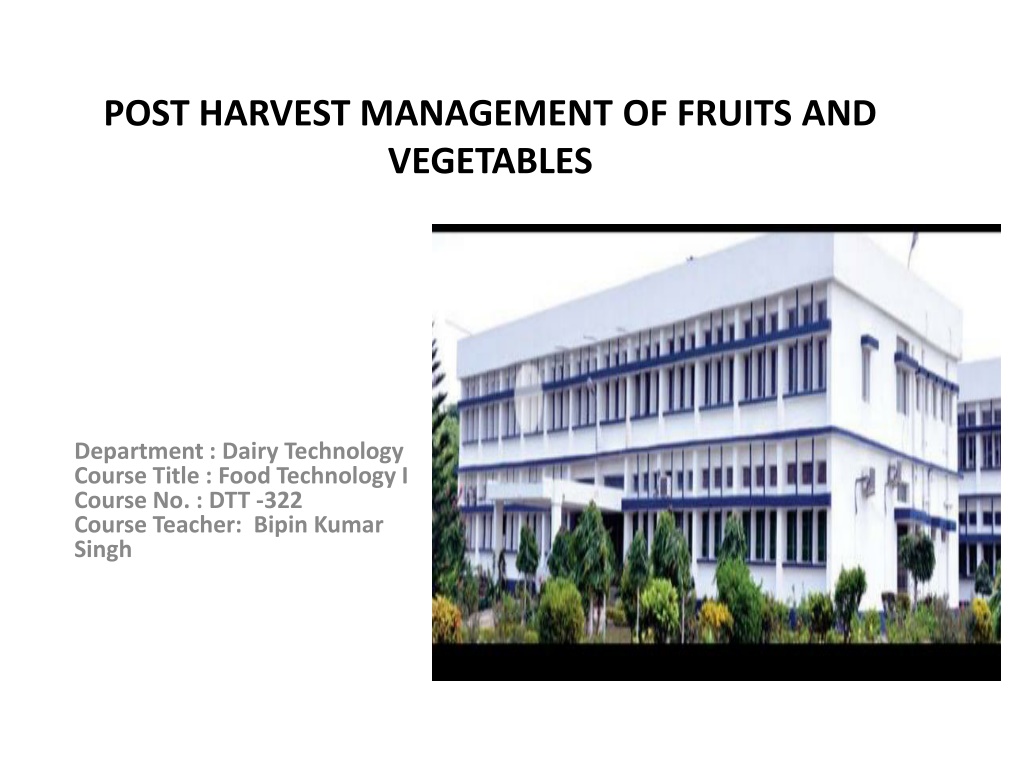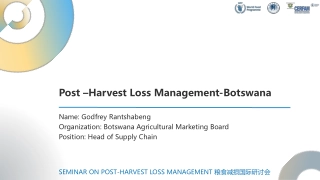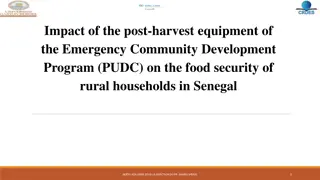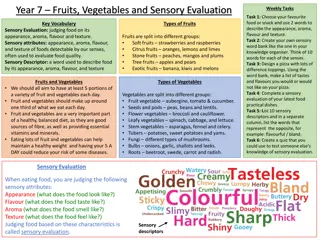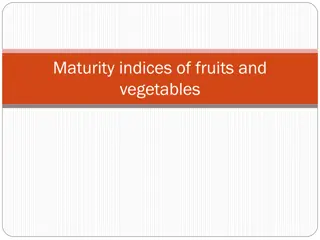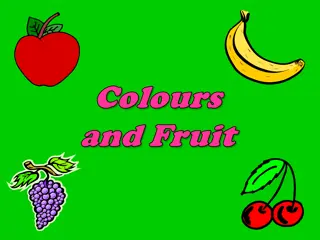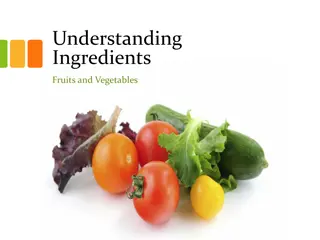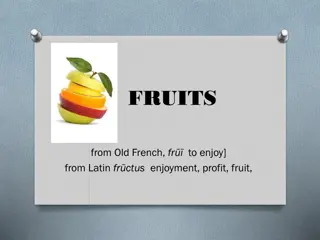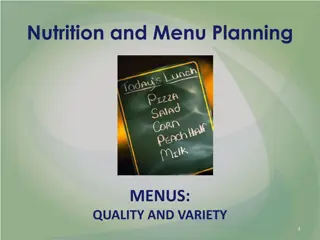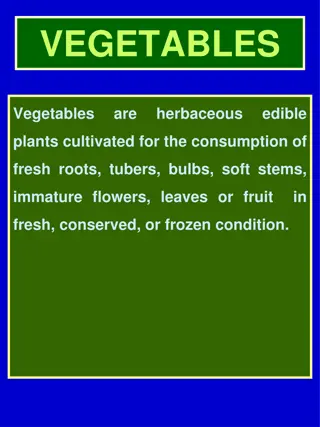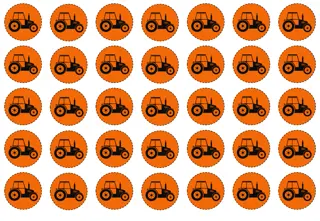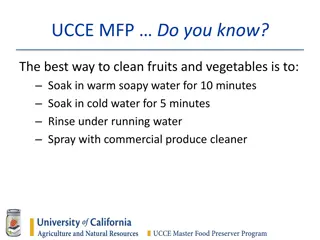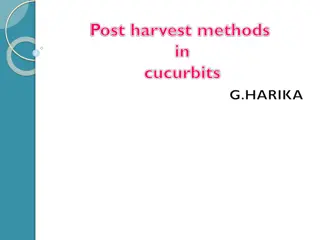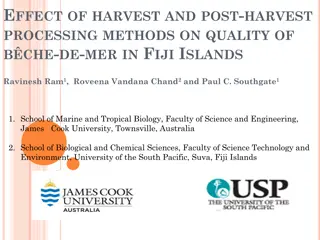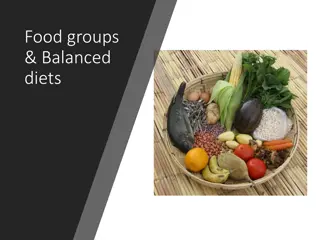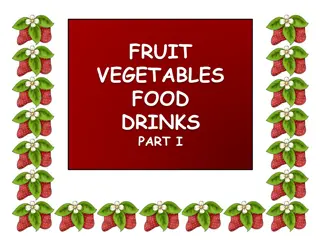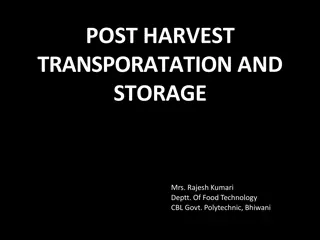Post Harvest Management of Fruits and Vegetables in Food Technology Course
Post Harvest Management of Fruits and Vegetables is crucial to reduce wastage during transportation and storage. This course covers harvesting techniques, maturity indices, and methods for determining harvesting maturity in fruits and vegetables. Emphasis is placed on ensuring the produce reaches consumers in optimal condition, flavor, appearance, size, and shelf-life. Various criteria and methods are discussed to facilitate efficient post-harvest handling.
Download Presentation

Please find below an Image/Link to download the presentation.
The content on the website is provided AS IS for your information and personal use only. It may not be sold, licensed, or shared on other websites without obtaining consent from the author. Download presentation by click this link. If you encounter any issues during the download, it is possible that the publisher has removed the file from their server.
E N D
Presentation Transcript
POST HARVEST MANAGEMENT OF FRUITS AND VEGETABLES Department : Dairy Technology Course Title : Food Technology I Course No. : DTT -322 Course Teacher: Bipin Kumar Singh
Introduction Fruits and vegetables, fresh or processed, form an important component of our diet and there is an ever increasing demand for these. India being the top producer of both fruits and vegetables in the world, more emphasis is needed to minimize past harvest losses. At present about 70-80% of our production goes waste mainly during transportation and storage. A clear understanding of biochemical and physiological changes in fruits and vegetables during post harvest operations will enable persons involved in handling, transportation and storage operation to regulate certain critical parameters.
Harvesting or Maturity Indices of Fruits and Vegetables Harvesting is the process of gathering a ripe crop from the fields. Reaping is the cutting of grain or pulse for harvest, typically using a scythe, sickle, or reaper. On smaller farms with minimal mechanization, harvesting is the most labor-intensive activity of the growing season
Contd.. Harvesting indices are defined in terms of either their physiological commercial maturity . The former refers to a particular stage in the life of a plant organ and the latter is concerned with the time of harvest as related to a particular end-use that can be translated into market Physiological maturity refers to a stage in the development of the fruit or vegetable when maximum growth and maturation has occurred. It is usually associated with full-ripening in a fruit. It is followed by senescence. maturity or their requirements.
Methods for Determining the Harvesting Maturity (a) Destructive and non-destructive methods (b) Physiological methods. Harvesting maturity should meet the following criteria: a. Should be at a stage which will allow it to be at its peak condition when it reaches the consumer. b. Should be at a maturity that allows it to develop as acceptable flavour or appearance. c. Should be at a size required by the market. d. Should not be toxic. e. Should have an adequate shelf-life.
Contd.. Commonly following criteria have been utilized for fixing maturity standards: Computation of days from bloom to harvest Measurement of heat units Visual means- skin colour, persistence or drying of parts of plant, fullness of fruit Physical methods- ease of separation, pressure test, density, grading etc. Chemical methods- total solids, sugars, acid, sugar-to- acid ratio, starch content etc. Physiological methods- respiration methods etc.
Factors Affecting the Postharvest Quality of Fruits and Vegetables Biological factors a. Respiration rate I. Breakdown of storage macromolecules like polysaccharides, fats or proteins II. Oxidation of sugars to pyruvic acid III. Aerobic transformation b. Ethylene production c. Transpiration or water loss d. Physiological disorders
Contd... e. Physical damage f. Pathological breakdown Environmental factors a. Temperature b. Relative humidity (RH) c. Air movement d. Atmospheric composition e. Ethylene
Storage of Fruits and Vegetables Evaporative cooling and storage Controlled and modified atmosphere storage The following are some types of atmosphere- modification techniques: a. Atmosphere Generation b. Hypobaric (Low-Pressure) Systems c. Commodity-Modified Atmospheres
Contd. Benefits of CA storage Very low levels of O2 (<2%) and high CO2 level ( 60%) can control insects. A considerable decrease in respiration rate, in climacteric maximum, accompanied by an expansion of both pre-climacteric and post-climacteric period. Reduction in effect of C2H4 due to its interaction with O2 and hence delay in development and appearance of the symptoms of senescence. Increased flesh firmness due to inhibition of enzymes responsible for damage of cellular membrane, at high CO2 level.
Contd. High turgidity and hence more juicy & crisp fruits., Superior sensory and nutritional quality. A limited degradation of chlorophyll resulting in greater colour stability. Some physiological disorders, such as chilling injury, spot, decay, browning, water core and scald are greatly reduced. Mould growth is low due to less O2 and high CO2. Longer storage life.
